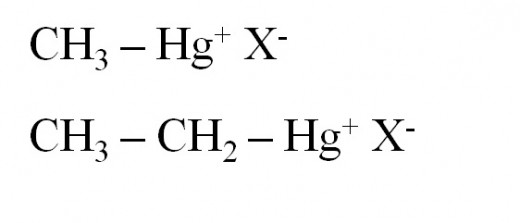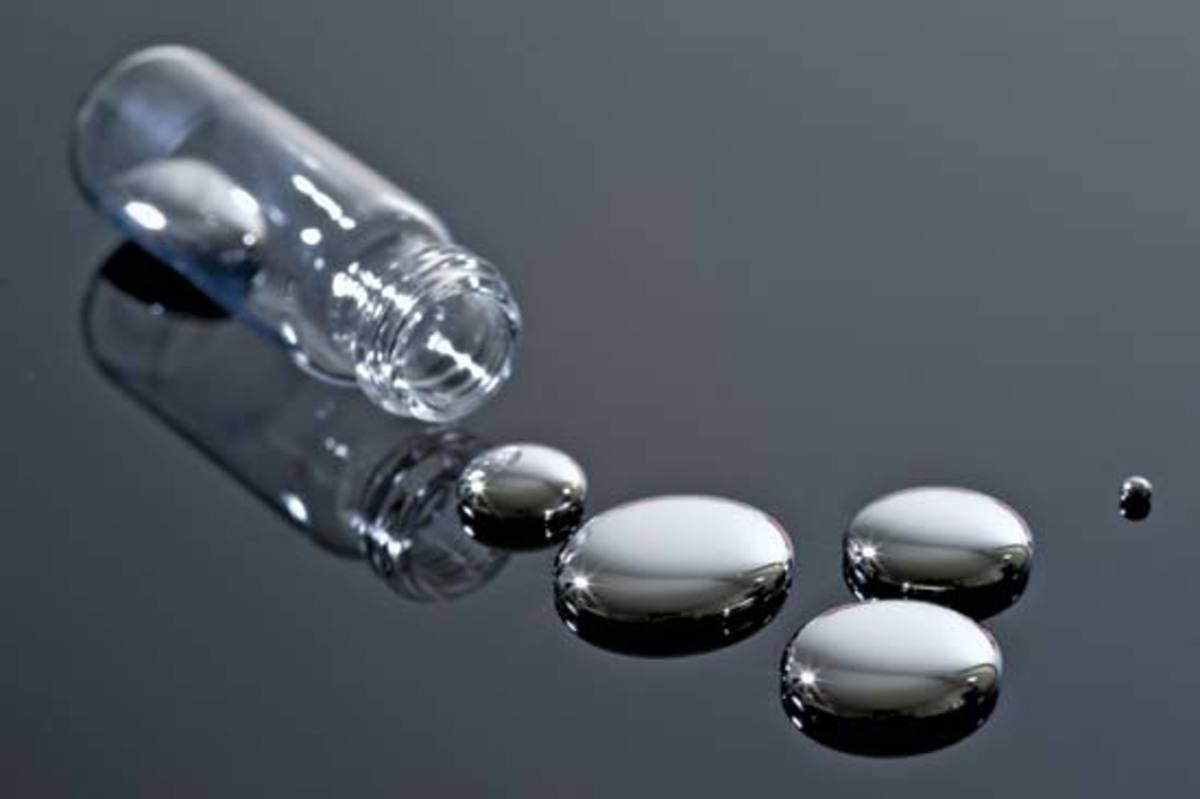Mercury in Vaccines, Are They Safe? Questions and Answers

Background
Ever since the Wakefield study there has been a lot of fear and controversy surrounding vaccinations. Especially concerning the idea that a mercury containing chemical called thimerosal might cause autism in children. There have been many opinions and articles written concerning this. Some true and some not so true. What I hope to do is answer a few questions surrounding this topic that may have been overlooked and portray the other side of the opinion that isn't allowed to be voiced very often.
Do all vaccines have mercury and how much?
The concentration of mercury in flu vaccines for children 3 and up is either 0 or about 25 micrograms/0.5 mL. Depending on the manufacturer of the vaccine. The CDC still allows 5 out of 12 of the flu, vaccines to still contain this significant amount of Thimerosal.[1] They also allow the Tetanus, Diphtheria, and Meningitis vaccines to have 24-25 micrograms/ .5 mL. 25 micrograms/ .5 mL is equal to 50 micrograms/mL which is equal to 50,057 parts per billion.
http://www.cdc.gov/flu/protect/vaccine/vaccines.htm
http://www.endmemo.com/sconvert/ug_mlppb.php
http://www.fda.gov/biologicsbloodvaccines/safetyavailability/vaccinesafety/ucm096228#t3

What form of mercury is this?
The form of mercury in vaccinations is an organic form called Thimerosal. It is a complex organic molecule containing mercury. Thimerosal is a preservative used to kill bacteria and keep it from growing on the vaccine in shipment. Instead of thimerosal in many vaccines they use alternative preservatives such as phenol, benzethonium chloride and 2-phenoxyethanol.
http://www.cdc.gov/vaccinesafety/Concerns/thimerosal/index.html
http://en.wikipedia.org/wiki/Thiomersal
http://www.fda.gov/biologicsbloodvaccines/safetyavailability/vaccinesafety/ucm096228#t2

What is the most common form of mercury?
The most common form of mercury is methylmercury. It is made by bacteria from inorganic mercury and excreted into the environment. It tends to bioaccumulate in animals like fish. It is the most concern to the FDA and CDC in your fish.
http://www.cdc.gov/vaccinesafety/concerns/thimerosal/thimerosal_faqs.html
Methylmercury and Ethylmercury

Does thimerosal contain methylmercury?
No, thimerosal contains a form of mercury called ethylmercury. When thimerosal is injected into a human body the thimerosal breaks down into ethylmercury.
http://www.cdc.gov/vaccinesafety/concerns/thimerosal/thimerosal_faqs.html
How much mercury can a child tolerate?
The Joint FAO/WHO Expert Committee on Food Additives have set a tolerable *weekly* intake of methylmercury to be 3.3 micrograms/Kg of body weight. Children gain an average of 4 to 6 pounds per year. If a child weighed about 9 pounds at birth and gained 18 pounds by age 3 then he would weigh about 27 pounds. That is 12.247 Kg. His tolerable weekly upper intake would be 40 micrograms. Divided by seven that would be 5.7 micrograms per day. A 3 year old child receiving a flu vaccine with 25 micrograms of mercury is getting about 4.3 days worth of mercury in a single dose! That mercury exposure is based upon methylmercury and not ethylmercury. This is in addition to the dietary mercury that the child will be exposed to as well as the environment mercury that he may be exposed to from amalgam tooth fillings.
http://www.inchem.org/documents/jecfa/jecmono/v44jec13.htm
Are You Getting More Mercury from Fish?
Some people have compared the mercury load of vaccines to the mercury load of eating fish. For comparison let's compare a multi-dose flu vaccine mercury load to that of a can of tuna. A can of tuna has 0.128 Parts Per Million of mercury which comes out to 11.4 mcg of mercury per can. A multi-dose flu vaccine contains 25 mcg. Let's say that you are stuffing your <1 year old child with an entire can of tuna, for some odd and possibly abusive reason, that can of tuna will not be absorbed by the body all at once in less than a second like the vaccination would it would slowly be digested over the course of several hours. Then it would be absorbed into the the portal vein and go directly to the liver where it will be processed. That mercury will have a chance to be processed and removed from the system before the brain or other tissues of the body had a chance to absorb it. A vaccination on the other hand if injected into the arm will go straight to the axillary vein, then the heart, the lungs and up to the brain and the rest of the body. On top of that you are receiving the ethyl mercury form instead of the methyl mercury form in fish.
http://www.fda.gov/food/foodborneillnesscontaminants/metals/ucm115644.htm
Is ethylmercury as toxic as methylmercury?
There is some debate over this topic among professionals. The CDC says “Studies comparing ethylmercury and methylmercury suggest that they are processed differently in the human body. Ethylmercury is broken down and excreted much more rapidly than methylmercury. Therefore, ethylmercury (the type of mercury found in the influenza vaccine) is much less likely than methylmercury (the type of mercury in the environment) to accumulate in the body and cause harm.” Although according to a paper published in the Journal of Applied Toxicology “In the following text extrapolation of blood mercury concentration to the end of exposure is based on a 50-day clearance half-time. These clearance half-times are not corrected to the toxicologically important loss of alkylmercury by the cleavage of the alkylmercury bond, although, compared with methylmercury 3 days after five daily doses, ethylmercury-treated rats had in blood about 13-fold, in brain 3,6-fold and in kidney 3-fold more inorganic mercury.” That means that the half life of ethylmercury is shorter because it decays into inorganic mercury faster than methylmercury.
Another study done on monkeys injected with thimerosal and published in the Journal of Environmental Perspectives confirmed that thimerosal was more toxic than methylmercury. They injected the monkeys with methylmercury and ethylmercury and found that “the proportion of inorganic mercury in the brain was much higher in the thimerosal group (21–86% of total mercury) compared to the methylmercury group (6–10%). Brain concentrations of inorganic mercury were approximately twice as high in the thimerosal group compared to the methylmercury group. Inorganic mercury remains in the brain much longer than organic mercury, with an estimated half-life of more than a year. It’s not currently known whether inorganic mercury presents any risk to the developing brain.”
Methylmercury may get stored in tissues longer but ethylmercury has a faster rate of decay into inorganic mercury which stays in the the tissues a lot longer than ethylmercury which may overload the body faster and potentially cause greater problems. The toxicity of mercury comes from the inorganic ionic form of mercury because it causes the degeneration of brain cells. If you watch the video done by the University of Calgary you can see how toxic inorganic mercury is to the brain tissues.
Not only is the 3 year old child receiving a 4.3 day dose of mercury in a single sitting but he is receiving a form of mercury that is approximately 2 times as toxic! That is like eating 8.6 times the daily dose of mercury that your child can tolerate at the most!
http://www.cdc.gov/vaccinesafety/concerns/thimerosal/thimerosal_faqs.html
http://onlinelibrary.wiley.com/doi/10.1002/jat.721/abstract
http://www.ncbi.nlm.nih.gov/pmc/articles/PMC1280369/
https://www.youtube.com/watch?v=IHqVDMr9ivo
Effects of Inorganic Mercury on the Brain
Is there a link between mercury toxicity and symptoms of autism?
Even though not all epidemiological studies have not supported the hypothesis that thimerosal in vaccinations are the cause of autism, there are many links between the mercury poisoning and autism spectrum disorder.
According to a paper published in Medical Hypothesis, many of the symptoms found in Autism are common in patients with mercury toxicity. Symptoms such as:
Social deficits, shyness, social withdrawal, obsessive compulsive tendencies, depression, mood swings, irritability, aggression, anxiety, lacks eye contact, impaired visual fixation, loss of speech, speech comprehension deficits, verbalizing ans word retrieval problems, sensory abnormalities, abnormal sensation in mouth and extremities, sound sensitivity, deficits in eye-hand coordination, over sensitivity to light, mental retardation, ADHD, sleep difficulties, self injurious behavior, rashes, diarrhea, colitis, anorexia, nausea, lesions of ileum and colon, increased gut permeability and many others.
Some epidemiological studies have found a link between increased autism rates and the introduction of thimerosal into vaccines according to the paper "The discovery and rise in prevalence of ASD mirrors the introduction and spread of TMS in vaccines. Autism was first described in 1943 among children born in the 1930s. Thimerosal was first introduced into vaccines in the 1930s. In studies conducted prisor to 1970, from 1970 to 1990 it averaged 1 in 2000; in studies from 1970 to 1990 it averaged 1 in 1000. This was a period of increased vaccination rates of the TMS-containing DPT vaccines among children in the developed world. In the early 1990s, the prevalence of autism was found to be 1 in 150 children affected in one community, which was consistent with reports from other areas in the country. In the late 1980s and early 1990s, two new TMS vaccines, the HIB and Hepatitis B, were added to the recommended schedule."
“...every major characteristic of autism has been exhibited in at least several cases of documented mercury poisoning.”...”The timing of mercury administration via vaccines coincides with the onset of autistic symptoms. Parental reports of autistic children with measurable mercury levels in hair and urine indicate a history of mercury exposure. Thus the standard primary of criteria for a diagnosis of mercury poisoning – observable symptoms, known exposure at the time of symptom onset and detectable levels in biological samples – have been met in autism.”
This is not really surprising considering how we know that mercury affects the nerves and brain and autism is a disorder of the brain and nervous system.
http://www.medical-hypotheses.com/article/S0306-9877(00)91281-7/abstract
Is mercury in vaccines the only factor that could be linked to autism?
No, because toxic metals are more toxic when they are combined together. in fact many vaccines have aluminum salts in them as well which when combined with thimerosal have a synergistic toxicity effect, where the two chemicals together are more toxic than either of them alone.
Dr Michael Godfrey and dentist Noel Campbell write:
"...a lethal dose (LD1 [enough to kill 1% of the rats]) was combined with a 1/20th LD1 of lead, resulting in a LD 100 [100% death rate] in the test animals."We have recently found that considerable amounts of lead may be excreted with the mercury following DMPS provocation. Our preliminary investigations appear to indicate that a synergistic effect could be identified by multiplying the lead and mercury concentrations together, after adjusting to IG of urine creatinine. We have termed this the Campbell-Godfrey factor (C-G factor). Chronically affected patients may have high levels of either metal or a high total C-G factor. Those with the highest C-G factor appear to be the worst affected, thus indicating that the synergism in animals is replicated in man."
This means that when you add two toxic metals together they become exponentially more toxic than when they were separated.
In a paper published in Medical Veritas by Dr. Boyd E. Haley showed that aluminum had a synergistic effect with thimerosal to cause an increased death in cultured neuron cells. Neurons were cultured in a petri dish and exposed to different compounds. 500 nM of Aluminum, 50 nM of thimerosal and both combined together. The cell death after 12 hours of exposure the cell death of the Aluminum exposed neurons was about 10%, the cell death of neurons exposed to thimerosal was about 40% and the cell death of the neurons exposed to both mercury and aluminum was 80%!
There is also the genetic predisposition of certain people to mercury. Mercury is eliminated from the body by glutathione produced in the liver. If glutathione levels are low because of a genetic predisposition then some individuals will have a particularly difficult time removing mercury from their bodies. Amalgam fillings may be a contributing factor as well, it being the highest source of mercury in the human body. The only difference being that amalgam filling mercury is leached into the body slowly over a long period of time. This gives the body time to deal with the mercury. Some people may be safe if they have a strong body and low toxicity but for others vaccines just may be the straw that broke the camel's back.
In Dr. Haley's paper he showed that in healthy children mercury levels measured in hair reflected the amount of amalgam fillings in the mother. In children with autism there was no correlation but average hair mercury levels were much lower than the average for normal healthy children. This showed that children with autism had a highly decreased capability to excrete mercury from the cells.
Neuron Cell Death Rates %
Time (hours)
| Control (nothing added)
| 500 nM Aluminum Hydroxide
| 50 nM thimerosal
| Aluminum and thimerosal
|
|---|---|---|---|---|
0
| 0%
| 0%
| 0%
| 0%
|
6
| .5%
| 2%
| 5%
| 50%
|
12
| 1%
| 3%
| 40%
| 80%
|
Approximate representation extrapolated from a graph of the data
Conclusion
To sum it all up we found that thimerosal has twice the potential toxicity to your body as methylmercury that is found in our food. When a 3 year old child receives a vaccine with thimerosal they are getting 4.3 times the maximum dose that a child should be getting. With twice the toxicity of thimerosal that is about 8.6 times the maximum of what a healthy normal child should be getting in a single day. Aluminum, a metal used in the vaccines at the same time for preservation, increases the toxicity of other heavy metals exponentially. For a normal child that might not cause permanent severe damage but for many other children that are not as healthy and able to deal with the toxic metals it is a very real possibility that it could cause neurological damage. With all of this in mind I wonder why the CDC allowed the vaccines to contain mercury in the first place? Not to mention combining the mercury with aluminum. If they will allow such a toxic chemical in their inoculations, I can only imagine what else they will allow in them.
For many parents they feel like they are stuck between a rock and a hard place because their choices are either don't get the vaccines and risk getting your child sick and other kids sick and possibly dying or get the vaccines and risk having your child develop a neurological disorder.
If you don't decide to get the vaccines then there many immune boosting alternatives that you can take to keep your child's immune system healthy and strong. Those I will talk about in a new hub. If you feel your child really needs vaccinations and his immune system isn't capable of fighting off the viruses at least get the mercury free vaccines. I would strongly recommend doing a detox before and after your child gets the shots. I will also talk about those in a new hub.
Further Reading:
“Thimerosal and autism? A plausible hypothesis that should not be dismissed”
http://www.sciencedirect.com.erl.lib.byu.edu/science/article/pii/S0306987704000374
“Adverse Events Following Vaccination”
http://progress.umb.edu.pl/sites/progress.umb.edu.pl/files/129-141%20Sienkiewicz.pdf








